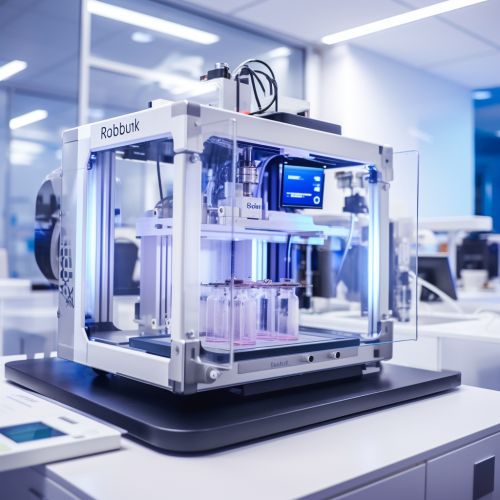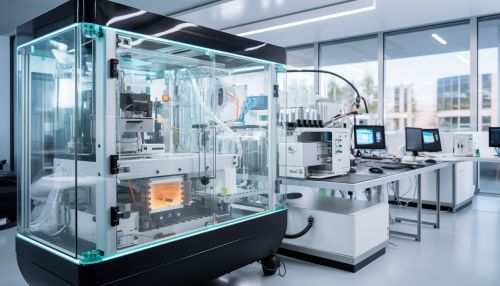Bioprinter
Introduction
A bioprinter is a type of 3D printer that is used in the field of tissue engineering and regenerative medicine. It employs a layer-by-layer approach to deposit materials known as bioinks to create tissue-like structures that are later used in medical and tissue engineering fields. Bioprinters can be used to print tissues and organs to help research drugs and pills.


History
The concept of bioprinting originated from the use of 3D printing technology. The first patent related to this technology was issued in the early 2000s. The evolution of bioprinting has been influenced by the development of 3D printing technologies and the increasing demand for organ transplantation.
Technology
Bioprinting technology is based on the principles of computer-aided design (CAD) and computer-aided manufacturing (CAM). It involves the use of a digital model to guide the printing process. The digital model is a 3D representation of the tissue or organ to be printed.
Process
The process of bioprinting involves several steps. The first step is the creation of a digital model, which is a 3D representation of the tissue or organ to be printed. This model is created using imaging technologies such as computed tomography (CT) or MRI.
Applications
Bioprinting has a wide range of applications in the field of regenerative medicine and tissue engineering. It is used to create tissue constructs for regenerative medicine, to test new drugs, and to study basic biological phenomena.
Challenges and Future Directions
Despite the potential of bioprinting, there are several challenges that need to be overcome. These include the development of suitable bioinks, the improvement of printing resolution and speed, and the creation of vascularized tissues.
